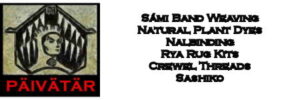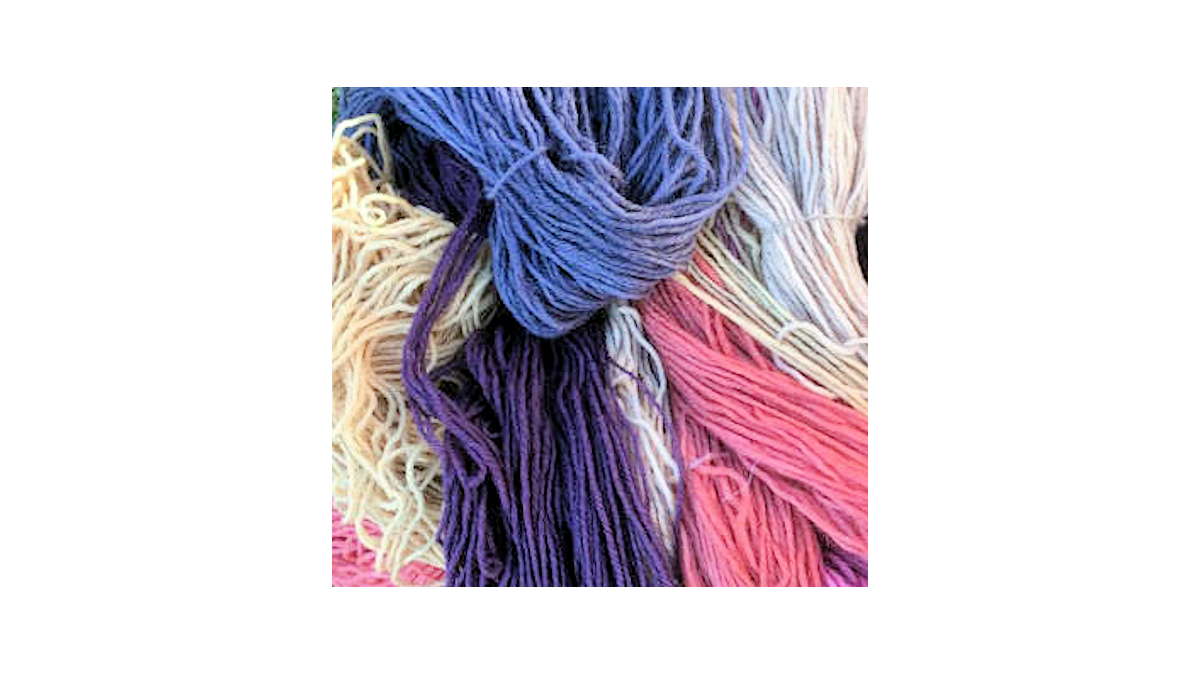Did you know that textiles dyed with plant dyes can be good for you?
As a part of my personal search for a healthier lifestyle, I am on an ongoing quest to learn more about natural plant dyes, their uses and how to achieve the range of colours that plant dyes can produce. In this age of mass production, I fear that we are losing much of the knowledge that our ancestors had about how to make things using the raw materials that nature provides.
In my latest googling, I made a remarkable discovery (well, remarkable to me at least, as I had never heard of this before) Most natural plant dyes are anti-microbial. When yarns or fabrics are dyed using natural dyes and come into contact with bacteria, they prevent their spread.
Amazing, right? It is amazing to think that our ancestors who made and wore natural plant dyed fabrics, before the days of antibiotics or even much knowledge about germs, were also giving themselves protection against the spread of disease- Naturally.
Nature looks after us. The trees and plants clean our air. Roots of some plants clean up the soil, removing hazardous materials. Plants provide humans and other animals food to live on. Plants provide us with clothing (such as flax and cotton) Before the age of pharmaceuticals, plants were used as medicines. Plants also add colour to our clothing. And in addition to that, the natural dyes from the plants reduced the spread of harmful bacteria.
Yet here we are, purposefully destroying our whole eco-system that has sustained us for thousands of years.
We are becoming increasingly aware of the harmful effects of fossil fuels, of the use of plastics that pollute our rivers and streams, of the destruction of the rain forests. The problem seems insurmountable as our planet struggles with climate change.
I think to tackle part of this plastics problem, we have to start small, with the positive things that we can do within our own environment. Saying no to plastic bags, re-using and recycling whenever possible. Making changes to our buying habits. Shopping for locally produced foods and materials. Read labels – don’t buy products that contain plastics, acrylics, polyester.
As part of this, I think that textile crafters can play a huge part in this – choosing not to use yarns and fabrics that contain plastic content. Buy natural wools, cottons, linen, hemp, alpaca, mohair, silk and other natural fibres instead. Say no to superwash yarns. And in helping to revive the traditional crafts and skills of textiles, working with fibres, spinning, weaving, natural dyes. I know that it is currently quite difficult to source and find natural wools but a few are still available. Yes, clothes may need a bit of extra care when washing, but then you know that your washing machine is not flushing micro-plastics into our water systems.
Clothing is one of our major commodities and fabric and clothing manufacturing is a high polluter. If demand for plastics and synthetic fibres diminish, the industry will change. Knit, crochet, weave and wear yarns and clothing that have been dyed with natural plant materials rather than harmful synthetic dyes. Experiment with using and making natural dyes. Some of these dye plants can be found in your kitchen – such as promegranate peels, onion skins, turmeric and other spices. If you have space, plant some trees and a dye garden. The bonus of using natural materials rather than synthetics is, that your clothing might also provide you with some protection against diseases, reducing the need for antibiotic use.
NEXT:
Anti-microbial Effects of Natural Dyes
Natural dyes are a good thing. In my research, I came across numerous research studies that have been done in the past several years about dye plants and their effectiveness against harmful microbes.
MORE
Plant Dyes and Your Health
How to Sew a Face Mask
No-Nylon Sock Knitting
Shop for Natural Dyes at Paivatar.com



AMAZON – Natural Dye Books
The Wild Dyer: A Maker’s Guide to Natural Dyes with Project to Create and Stitch (learn how to forage for plants, prepare textiles for dyeing, and … from coasters to a patchwork blanket)
The Modern Natural Dyer: A Comprehensive Guide to Dyeing Silk, Wool, Linen and Cotton at Home
The Art and Craft of Natural Dyeing: Traditional Recipes for Modern Use
A Weaver’s Garden: Growing Plants for Natural Dyes and Fibers
>A Heritage of Colour: Natural Dyes Past and Present
Natural Dyes: Sources, Traditions, Technology & Science
EBAY – Yarn Supplies
Natural Dyed Yarn – US
Natural Dyed Yarn – UK
 LONGTHREAD MEDIA VIDEO
LONGTHREAD MEDIA VIDEO
 LONGTHREAD MEDIA SUBSCRIPTIONS
HANDWOVEN MAGAZINE
PIECEWORK MAGAZINE
SPINOFF MAGAZINE
LEARN LONGTHREAD MEDIA
PAIVATAR HANDMADE
LONGTHREAD MEDIA SUBSCRIPTIONS
HANDWOVEN MAGAZINE
PIECEWORK MAGAZINE
SPINOFF MAGAZINE
LEARN LONGTHREAD MEDIA
PAIVATAR HANDMADE
 Paivatar on YouTube
Visit my YouTube channel for how-to craft videos.
Paivatar on YouTube
Visit my YouTube channel for how-to craft videos.
Or Please visit my Channel on Rumble for more how-to videos.
https://rumble.com/Paivatar
LIVE STREAMS - Paivatar Studio
KICK
TWITCH MAKERS&CRAFTING
YOUTUBE
Categories: NATURAL DYES



